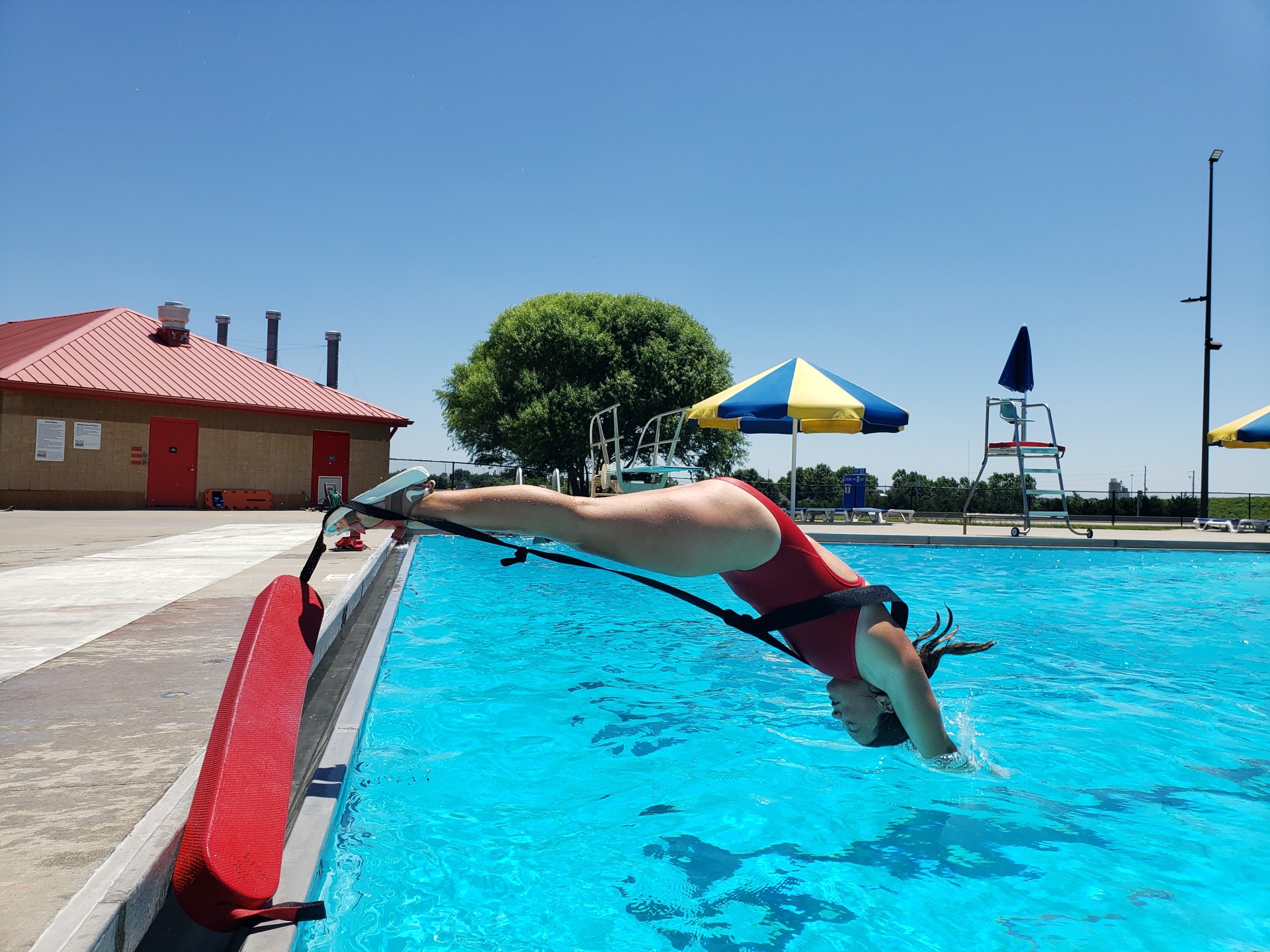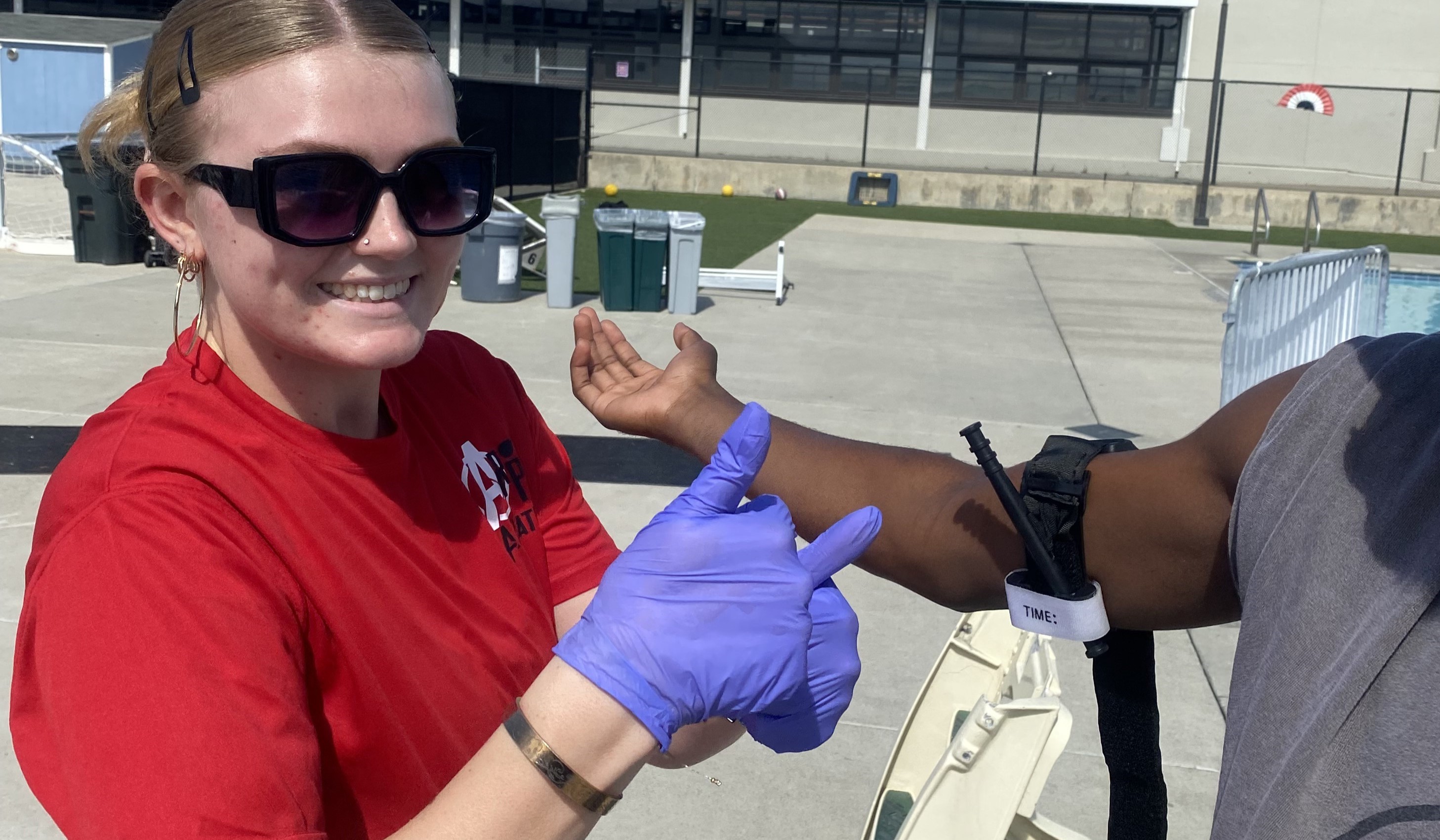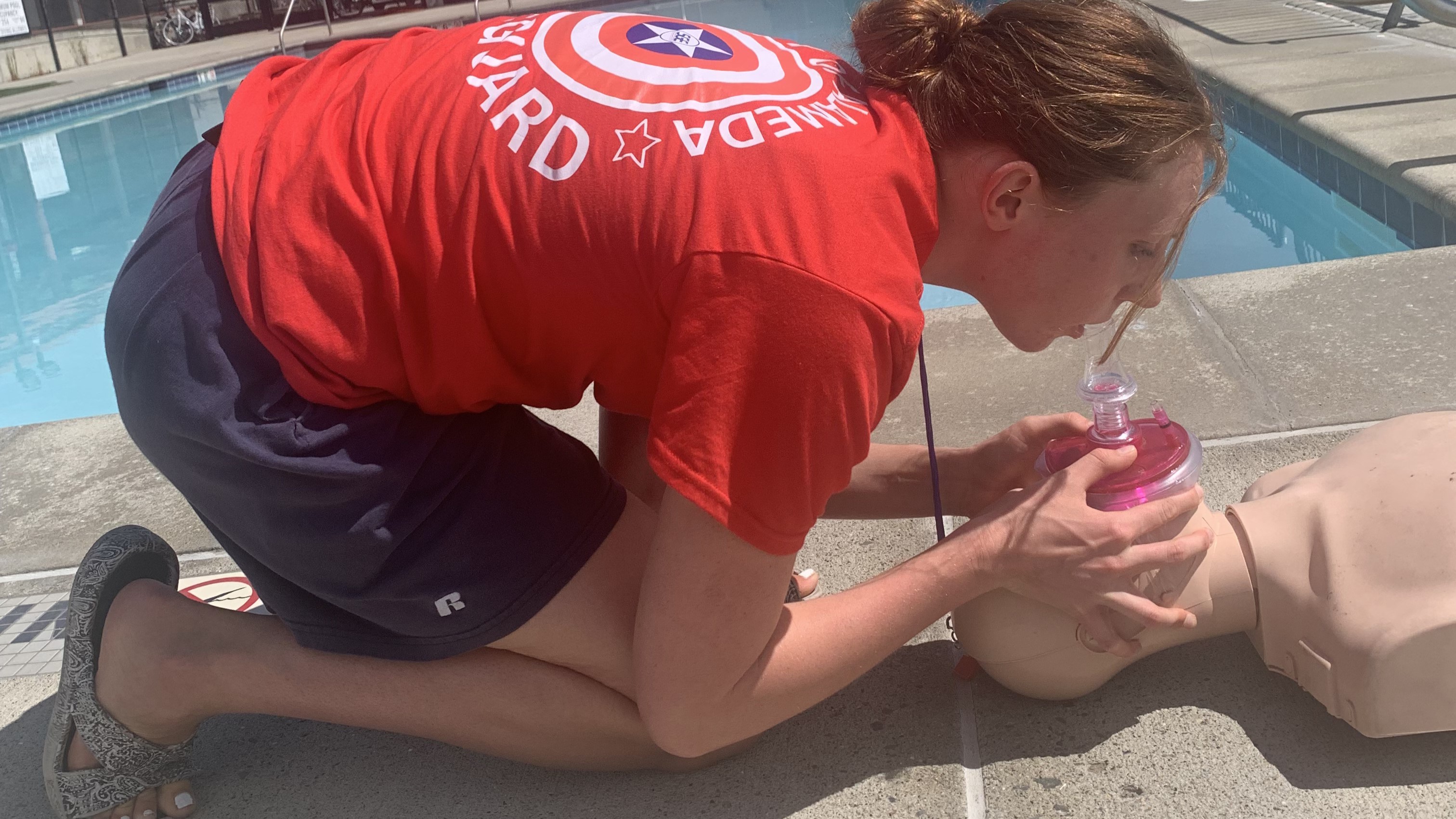Recently, I saw the image of American synchronized swimmer Anita Alvarez being rescued by her coach, Andrea Fuentes, after fainting during her routine at the World Championships in Budapest, Hungary. The image shows Fuentes swimming underwater to reach the unconscious Alvarez, who is sinking to the bottom of the pool. Fuentes’ quick action made all the difference in averting a tragedy.
It raises the question: Are lifeguards trained to get quickly to the bottom of a 9-foot-deep pool? What about 12 feet deep, or 16 feet? When looking at water entries for a lifeguard certification course, depending on the course, one could be taught a wide range of different ways to enter the water from the side of the pool: the Ease-In or Slide-In entry, Stride Jump entry, Compact Jump entry, Touch-and-Go entry, Waveless entry, Run-In entry, or the Shallow Dive entry. Which would work for quickly and efficiently reaching the bottom of a deep pool, meaning 9 to 16 feet? Let’s review:
• Ease-In, Slide-In and Waveless are roughly the same, an entry that moves slowly to reduce splash and minimize damage if the lifeguard suspects a spinal injury.
• Run-In addresses a zero-depth pool or waterfront setting.
• Touch-and-Go is for shallow water, where the lifeguard enters with one hand on the pool edge and the other on the rescue tube.
• Compact Jump and Stride Jump entries can be used for water that is 5 feet deep or more, however both keep the lifeguard on the water’s surface. The energy generated by launching from the deck or lifeguard stand is used to propel the lifeguard along the surface (Stride Jump) or is absorbed and dissipated upon impact when the lifeguard and their rescue tube contacts the water (Compact Jump).
• Shallow Dive entry gets the lifeguard and rescue tube out to the victim quickly. This is used if the victim is a short distance away and on the surface.
From our list, Compact Jump, Stride Jump and Shallow Dive could be the best options. However, all three keep the lifeguard on top of the water and require an additional step — either a head-first or feet-first surface dive — to get the lifeguard from the surface to the bottom of the pool and rescue the victim.
If your agency and the depth of your pool allow, consider utilizing a dive or feet-first entry also known as a “Pencil Dive” to enter the water quicker and more efficiently when rescuing a submerged victim in water 9 to 16 feet deep.
Let’s go over the training.
First, assess your staff to see if they know how to dive. There is a good chance that about half lack this skill. If so, take the time to teach them. As a reminder, American Red Cross recommends that, when teaching diving from a pool deck, the pool should have a depth of 9 feet or greater.
The sequencing to incorporate diving into the in-service:
• Fundamentals of diving, include how to equalize ear pressure;
• Dive deep (going toward the bottom) and shallow (going near the surface);
• Shallow dive should include entry followed by 10 yards of head-high front crawl stroke, emphasis on keeping visual contact with the victim;
• On the deep dive, assess the depth the lifeguard reaches on momentum alone, followed by what it takes to reach the bottom (additional use of legs or arms, or both) and to do an effective push-off from the bottom to reach the surface;
• Once proficient in both deep and shallow dives, lifeguards should begin to incorporate the rescue tube and learn how to dive with it safely and quickly;
• For deep dives, lifeguards should assess to see if the rescue tube adversely affects the depth the lifeguard can reach or hampers the rescue. If so, determine what measures the lifeguard should take to overcome this challenge (potentially removing the rescue tube strap from over the head and shoulder and holding the strap loop with the hand).
Pencil dives (feet-first entry from the deck) provide another method to reach the pool bottom quickly. Lifeguards unfamiliar with this skill should be given time to practice. Emphasis should be placed on entering the water in a streamline form (legs together or slightly crossed) with arms at the side. If the guard can’t reach the necessary depth, then they should bring their arms over their head using the propulsion from this action to push themselves further down. Legs should stay together to maintain streamline form.
The sequencing to incorporate pencil dives into the in-service:
• Orientation of what a Pencil Dive is. Work on form for entry and propulsion methods to reach the pool bottom;
• Once proficient, work on effectiveness of doing a pencil dive from the side of the pool (with entry target about 3 feet away from side) and using a jump (where the target entry is greater than 3 feet away);
• When rescuers can reach the bottom, practice getting an effective push off the floor to return to the surface quickly, equalizing ear pressure if necessary.
• Once proficient, lifeguards should begin to incorporate the rescue tube and learn how to pencil dive with it safely and quickly. Assess whether the rescue tube adversely affects the depth the lifeguard can reach and adjust.
When I look at these two skills, I’m assessing whether their adoption will reduce the time it takes for my lifeguards to reach a submerged victim. I also hope that by introducing these two skills, I’m expanding the lifeguard’s toolbelt when it comes to rescue. Quick, efficient rescues are a powerful means of stopping the drowning process on a submerged victim. As a reminder, a submerged victim is a priority which will require a team effort and a team response.
Good luck and keep training.



